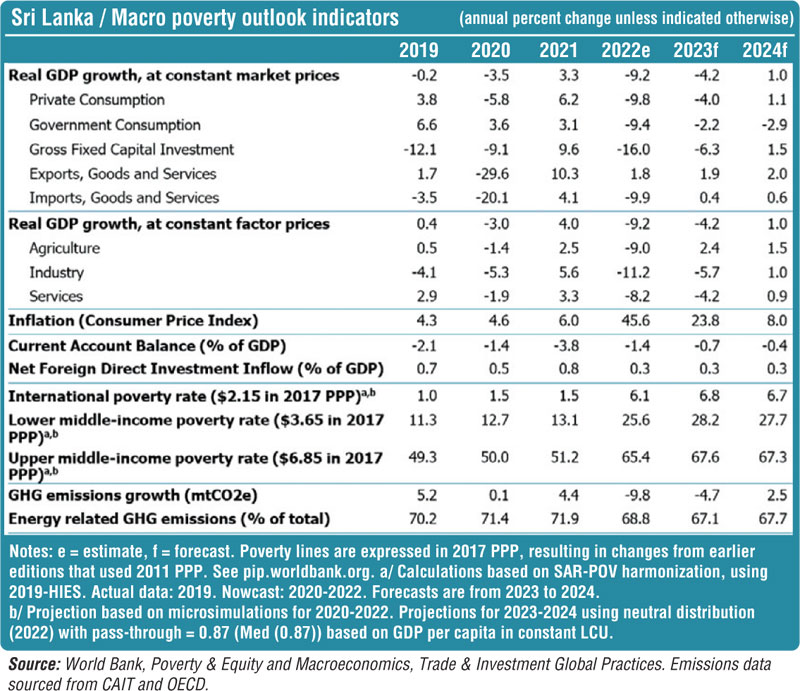Sunday Apr 20, 2025
Sunday Apr 20, 2025
Monday, 10 October 2022 00:39 - - {{hitsCtrl.values.hits}}
The World Bank last week said Sri Lanka’s economic crisis is deepening with unsustainable debt and a severe balance of payment crisis on top of the lingering scars of the COVID-19 pandemic.
Debt restructuring and the implementation of a deep reform program are critical for Sri Lanka’s economic stabilisation, the World Bank said in its twice-a-year update, underscoring the need for Sri Lanka to build resilience.
The latest South Asia Economic Focus, “Coping with Shocks: Migration and the Road to Resilience,” released on Thursday projects regional growth to average 5.8% this year – a downward revision of 1 percentage point from the forecast made in June. This follows the growth of 7.8% in 2021 when most countries were rebounding from the pandemic slump.
While economic distress is weighing down all South Asian countries, some are coping better than others. Exports and the services sector in India, the region’s largest economy, have recovered more strongly than the world average while its ample foreign reserves served as a buffer to external shocks.
The return of tourism is helping to drive growth in the Maldives, and to a lesser extent in Nepal – both of which have dynamic services sectors. The combined effects of COVID-19 and the record-high commodity prices due to the war in Ukraine took a heavier toll on Sri Lanka, exacerbating its debt woes and depleting foreign reserves.
Plunged into its worst-ever economic crisis, Sri Lanka’s real GDP is expected to fall by 9.2% this year and a further 4.2% in 2023. High commodity prices also worsened Pakistan’s external imbalances, bringing down its reserves.
After devastating climate-change-fuelled floods submerged one-third of the country this year, its outlook remains subject to significant uncertainty.
World Bank also released as a companion piece the latest Sri Lanka Development Update, which highlights the poverty and welfare impacts of the crisis and the role of social protection in protecting vulnerable populations.
“Protecting the vulnerable is critical as Sri Lanka fast tracks deep reforms to navigate the deepening economic crisis. The crisis calls for immediate action to protect the poorest and most in need while also focusing on strengthening the social protection system,” said World Bank Country Director for Maldives, Nepal and Sri Lanka Faris H. Hadad-Zervos.
“In the face of the economic crisis, poverty estimates doubled to 25.6% between 2021 and 2022, increasing the number of people living in poverty by 2.7 million. Sri Lanka will need to expand employment in industry and services and recover real value of incomes to mitigate the impacts of the crisis, and build long-term resilience of its people,” added Hadad-Zervos underscoring the need for a coordinated approach to supporting the poor and vulnerable.
The South Asia Economic Focus also put a spotlight on Sri Lanka’s economic crisis, drawing lessons from the Asian Financial Crisis of 1997.
“As Sri Lanka goes through the historically largest contraction in its economy, looking at global experiences such as the crisis in Latin America in the 1980s and the Asian Financial Crisis of 1997 can help chart solutions,” said World Bank Chief Economist for South Asia Hans Timmer.
“The East and Southeast Asian countries regained momentum by implementing sound reforms, which provide lessons for Sri Lanka to build back better.”
To this end, the spotlight highlights two key experiences of the Asian financial crisis as lessons for Sri Lanka. Firstly, the short-term measures needed to address structural weaknesses, and buffers to mitigate external shocks and build resilience to future shocks. Secondly, critical policies to promote future growth.
